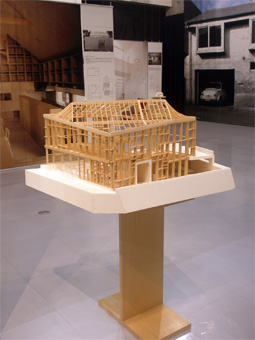 |
|
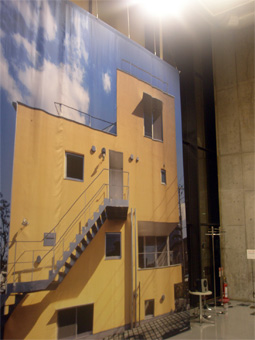 |
House SA, Kawasaki, 1999
|
|
Egota House A,Tokyo, 2004 |
|
Currently a Professor Emeritus at the Tokyo Institute of Technology (TIT), Kazunari Sakamoto is part of an important postwar lineage of architecture professors at that same institution. This begins with Kiyoshi Seike, who graduated from TIT in 1943, spent two years in the navy, and then returned to take up a teaching position. His student Kazuo Shinohara graduated in 1953 and became Seike's teaching assistant, then eventually a professor himself (as well as a hugely influential figure in contemporary Japanese architecture). Sakamoto was one of Shinohara's students, and after graduating in 1966 he worked as Shinohara's assistant and later joined the TIT faculty. Sakamoto's most famous student is Yoshiharu Tsukamoto, who graduated in 1987 and became an associate professor at TIT in 1994, shortly after establishing Atelier Bow-Wow with his own former student (and now wife) Momoyo Kaijima. Each of these figures began their career with empirical research into Japan's contemporary vernacular architecture and the typology of the private house, followed by an instrumentalization of their findings in their own architectural designs.
The recent retrospective exhibition of Sakamoto's work, held at the TIT Centennial Hall (a late-period masterpiece by Kazuo Shinohara), is in fact the third incarnation of a show that originated in 2001 at Tokyo's Gallery MA, titled "House: Poetics in the Ordinary." In 2004 it was significantly expanded, reconfigured, and shown at Munich's Pinakothek der Moderne as ;Häuser: Poetik im Alltäglichen" under the auspices of the Deutscher Werkbund and the direction of Bavarian architect Hannes Rössler. Having traveled throughout Eastern Europe and Scandinavia in 2005, the exhibition has returned to Japan and been further expanded with several recent projects -- notably Sakamoto's proposal for a major housing development in Munich, which won first prize ex aequo in a competition held by the Deutscher Werkbund. Sakamoto's body of work is almost entirely residential, and almost entirely freestanding private houses. Even the Munich project is atomized into a dispersed, low-rise array of smaller units, echoing his Common City Hoshida in Osaka, completed in 1992.
Alongside drawings and models of unbuilt proposals, the built works are primarily displayed using enormous photographs of their exteriors and interiors. Not quite full size, they nevertheless give a powerful sense of being in the presence of the real buildings. This is a deliberate attempt to overcome the main weakness of all architecture exhibitions: the original objects are never presented in the gallery, but substituted with more-or-less illuminating representations by means of drawings, models, photographs, and so on. A sense of the actual spaces is rarely achieved (admittedly, opening simultaneously at Gallery MA is a major Tadao Ando retrospective that includes a full-size replica of his seminal Row House in Sumiyoshi, but that is exceptional, to say the least). In Sakamoto's case, finding an appropriate technique for exhibiting the buildings as close as possible to their actual size is particularly important. As objects, his designs are unspectacular, humble, even mundane. Their true richness and complexity -- Sakamoto's consummate handling of scale, proportions, and sightlines -- is only fully comprehended through an experience of the buildings themselves.
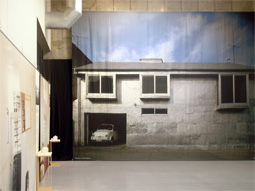 |
|
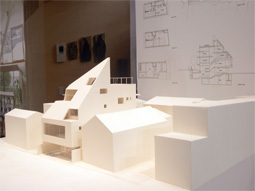 |
| Machiya in Minase, Tokyo, 1970 |
|
TQUICO, Tokyo, 2005 |
|
 |
|
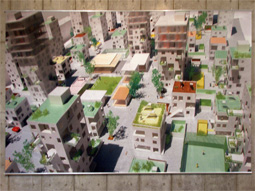 |
| Common City Hoshida, Osaka, 1992 |
|
Werkbundsiedlung Wiesenfeld, Munich, 2006 |
|
|
|
All photos by Thomas Daniell
|
|